The WPJ
THE WORLD PROPERTY JOURNALReal Estate Facts Not Fiction
Residential Real Estate News

Prudential Douglas Elliman Reports Manhattan's Q-4 Market Stats
Residential News » Residential Real Estate Edition | By Dottie Herman | January 6, 2010 8:00 AM ET
The number of sales increased over the prior year quarter as inventory fell
(NEW YORK, NY) -- There were 2,473 sales in the current quarter, up 8.4% from the 2,282 sales in the prior year quarter and up 10.9% from the prior quarter. This level of activity was more than twice the 1,195 sales seen in the first quarter of 2009, which had been lowest level of sales in nearly 15 years. The return to more normal historical levels of sales activity was also reflected in the decline in inventory levels. There were 6,851 active listings at the end of the quarter, a 24.6% decline from 9,081 listings in the same period a year ago, but down 18.3% from 8,389 listings in the prior quarter. The seasonal average decline in the number of listings from the third quarter to fourth quarter over the last decade with the exception of 2008 was -3.4%. Therefore the 18.3% decline in listings was considered atypical. Excess inventory was worked off by the surge in summer and fall sales activity, ordinarily seen during the spring market. This drop in the number of listings was also compounded by the seasonal trend of sellers withdrawing listings over the end of year holiday season and re-listing in the New Year. This decline in listing inventory does not include the "shadow inventory" of stalled new development projects, which is estimated to be in excess of 6,000 units.
Pace of decline in price indicators continued to ease
Despite the sharp decline in listing inventory, price indicators continue to show weakness. The median sales price of a Manhattan apartment was $810,000 in the fourth quarter, 10% below $900,000 in the prior year quarter and 4.7% below the $850,000 in the prior quarter. Average sales price followed a similar pattern, falling 12.7% to $1,296,156 in the prior year quarter and down 2.1% from $1,323,462 in the prior quarter. However the price per square foot indicator continues to be more volatile than the other two benchmarks as the shift in unit mix influences the results. Price per square foot was $1,051 in the fourth quarter, down 11.2% from the prior year quarter result of $1,183 but up 5.5% from the prior quarter result of $996. Entry-level apartments, namely studio and 1-bedroom units, garnered a 58% market share in the fourth quarter compared 53% in the prior year quarter. This market segment also saw the lowest year over year decline in quarterly median sales prices as compared to the remainder of the market.
Despite increase in activity, properties took longer to sell
The average days on market was 204 days in the fourth quarter, up 28.3% from the prior year quarter average of 159 days and jumped 22% from 167 days in the prior quarter. Since this metric is based on closed sales, it includes properties that entered the market in the first half of 2009 that languished until the number of sales surged in the third quarter. The jump in marketing time from the third quarter was consistent with the sharp decline in listings over the same period and increased sales activity causing older inventory to be absorbed. Listing discount increased to 12.8% in the fourth quarter from 7.3% in the prior year quarter and from 7.6% in the prior quarter.
The end of a decade. The beginning of a new market.
The second half of the 2009 Manhattan housing market reflected a new era, marked by the milestone Lehman Brothers Bankruptcy tipping point of September 15, 2008. Buyers, sellers and real estate professionals have slowly adopted to changes including stringent, if not irrational mortgage underwriting, elevated unemployment and layoffs, lower compensation, a sharp price correction, shadow inventory, first time home buyers tax credit, rising foreclosures, declining appraisal quality, expanding marketing times and a host of other challenges. While the increased level of sales in the second half of 2009 was encouraging, a true housing recovery will be marked by a meaningful decline in unemployment and greater consumer access to credit.
Co-Op Market - Price indicators mixed as number of sales jumped
Price indicators fell from prior year quarter, but "sideways" from prior quarter
The median sales price of a Manhattan co-op was $630,000, down 6.7% from the prior year quarter result of $675,000 and unchanged from the prior quarter. The pace of decline in the year over year change in median sales price has eased for the third consecutive quarter from the first quarter peak of -21.9%. The average sales price was $975,049 in the first quarter, down 19.6% from the prior year quarter average sales price of $1,213,382 and down 3.1% from $1,005,744 in the prior quarter. This is the first time this price indicator has fallen below $1,000,000 since the third quarter of 2005. Price per square foot was $921, down 13% from $1,059 in the prior year quarter, but up 6.4% from $866 in the prior quarter. A decline in year over year quarterly median sales price occurred in all apartment size categories. There were 8.5% and 8.4% declines in the studio and 1-bedroom markets respectively and double digit declines in the 2, 3 and 4-bedroom markets.
Number of sales jumped as inventory declined
There were 1,264 co-op sales in the fourth quarter, surging 28.3% from 985 sales in the prior year quarter and 27% above 995 sales in the prior quarter. This level of sales is more than three times the 414 sales of the first quarter of 2009, considered the low point in activity after the market tipping point in the fall of 2008. The number of sales is now consistent with the 10 year quarterly average of 1,270 sales. The robust level of sales in the fourth quarter relative to the first half of 2009 served to diminish the level of inventory on the market. There were 3,069 coop apartments on the market at the end of the fourth quarter, 19.4% below the 3,808 listings in the same period a year ago and down 20.1% from the prior quarter total of 3,840 listings. The combination of lower inventory and the higher number of sales caused the monthly absorption rate to fall to 7.3 months, the lowest level in two years. Co-op sales represented 51.1% of all apartment sales in the fourth quarter, up from 43.2% in the same period last year. This is a significant change from the same period a decade ago when the market share of co-op sales was 68.5%. Co-op inventory was 44.8% of all apartment listings excluding shadow inventory. Of total co-op inventory, 97.3% were considered re-sale listings and 2.7% were comprised of new development condo-ops--co-op apartments with condo rules.
Days on market expanded as listing discount jumped
The average days on market was 151 days, down nominally from 152 days in the prior year quarter, but 17 days longer than 134 days in the prior quarter. Listing discount continues to expand, reaching 18.3% as compared to 4.5% in the prior year quarter and 12.5% in the prior quarter. The combination of declining inventory and rising number of sales suggests that that remaining listings required larger discounts to reach current market levels as buyers continue to control the market.
Condo Market - Price indicators mixed and listing inventory dropped
Listing inventory fell sharply as number of sales slipped
Condos represented 55.2% of all apartment listings in the fourth quarter, consistent with each of the quarterly results of the past three years. There were 3,782 re-sales and new development condo units on the market at the end of the fourth quarter, 28.3% below the 5,273 units in the same period last year and 16.9% below the prior quarter total of 4,549. Of the condos listed for sale, 47.4% or 1,793 units were new development listings and 52.6% or 1,989 units were re-sale listings. The new development market share does not include "shadow inventory" which is estimated to be more than 6,000 units. There were 1,209 condo sales this quarter, down 6.8% from 1,297 units in the same period last year and down 2.1% from 1,235 units in the prior quarter. When breaking down market share by re-sale and new development sales, re-sale unit sales increased 53.6% over the same period last year and new-development unit sales fell 44.4% over the same period. The declining trend in new development closings reflect the constraints applied by lenders for consumer mortgages in new projects.
Price indicators from prior year quarter declined, change from prior quarter was mixed
The median sales price of a Manhattan condo was $995,000 in the fourth quarter, down 11.2% from $1,120,075 in the prior year quarter and down 2% from $1,015,124 in the prior quarter. This is the lowest result for this price indicator in approximately three years. Average sales price was $1,631,872 in the fourth quarter, down 3.5% from $1,691,459 in the same period last year, but up 3.3% from $1,579,438 in the prior quarter. Price per square foot followed a similar pattern, falling 7% to $1,187 from $1,277 per square foot in the prior year quarter and rising 7.8% from $1,101 in the prior quarter. Median sales price by apartment size saw double digit declines in all categories as compared to the same period last year with the exception of the 1-bedroom market, posting a 2.1% decline. All segments were either unchanged or higher than the median sales price of the prior quarter.
Days on market jumped while listing discount showed mixed results
The days on market for condos was 259 days, more than three months longer than the 164 days in the prior year quarter and more than two months longer than the 194 days of the prior quarter. The sharp increase in this metric is attributable to disparity between the 454 days on market for active new development units and 167 days on market for re-sale units, consistent with the 151 days on market for coop apartments. The average listing discount was 7.1% in the fourth quarter, down from 9.4% in the prior year quarter and up from 3.6% in the prior quarter.
Luxury Market - Price indicators remained below prior year, but inventory declined sharply
Price indicators declined from prior quarter consistent with overall market
Median sales price was $3,780,000 in the fourth quarter, 8.5% below the prior year quarter result of $4,132,516 and 3.2% below $3,905,000 in the prior quarter. Average sales price was $4,863,673 in the current quarter, down 12.5% from the prior year quarter average sales price of $5,559,502 and essentially unchanged from the $4,881,561 average sales price of the prior quarter. The year over year change in average sales price was -25.2% in the second quarter, 15.7% in the third quarter and -12.5% in the fourth quarter, combined with a nominal decline in the quarter over quarter results suggests a near-term stabilization in prices.
Listing inventory declined sharply
There were 1,384 listings of luxury apartments in the fourth quarter, down 20% from the prior year quarter total of 1,730 apartments and down 14.4% from 1,616 apartments in the prior quarter. The decline in inventory reflects a combination of a higher overall level of activity as compared to the first half of 2009 as well as the seasonal aspect of declining inventory in the final quarter of the year. There are several patterns in sales that are emerging. Firstly, the number of luxury re-sale units increased 26% from the prior year quarter and the number of new development units fell 12.4% over the same period. Secondly, listing inventory was comprised of 60% re-sales in the fourth quarter compared to 73% in the prior year quarter.
Days on market expanded as listing discount stabilized
The days on market for a luxury property was 240 days, 71 days slower than the 169 days in the prior year quarter and 59 days slower than the 223 days in the prior quarter. The average luxury property took 36 days longer to sell than the overall market. In contrast, listing discount was 4.3% in the current quarter, down from 7.5% in the prior quarter and up nominally from 4.1% in the prior year quarter. As a somewhat historical anomaly, the listing discount for luxury properties has been below overall market levels for three of the past four quarters.
Loft Market - Number of sales jumped as listing discount expanded
Pace of price declines eased
Median sales price of a Manhattan loft apartment was $1,400,000 in the fourth quarter, down 31.7% from the prior year quarter median sales price of $2,050,000 and down 6.7% from $1,500,000 in the prior quarter. Average sales price showed the same pattern, reaching $11,746,274 in the fourth quarter, down 26.1% from the prior year quarter average sales price of $2,364,485 and down 1.8% from $1,778,140 in the prior quarter. Price per square foot fell 16.7% to $1,056 from $1,268 in the prior year quarter, but was up 2.8% from the prior quarter total of $1,027.
Number of sales jumped as inventory dropped sharply
There were 182 loft sales in the fourth quarter, up 16.7% from 156 sales in the prior year quarter and up 46.8% from 124 units in the prior quarter. The number of sales was the highest total since the third quarter of 2008 and is consistent with the 186 unit ten year quarterly average. There were 486 listings in the current quarter, down 30.4% from the 698 listing total in the prior year quarter and down 22% from the 623 unit total in the prior quarter.
Listing discount and days on market expanded
The average days on market for a loft apartment was 190 days in the fourth quarter, a month longer than the 160 days in the prior year quarter and 53 days longer than the 137 days on market of the prior quarter. Listing discount also expanded, reaching 12.8% in the fourth quarter, nearly double the 6.5% listing discount of the prior year quarter and up from 7.7% from the prior quarter.
Sign Up Free | The WPJ Weekly Newsletter
Relevant real estate news.
Actionable market intelligence.
Right to your inbox every week.
Real Estate Listings Showcase

$1,200,000
Residential Land For Sale
Puerto Escondido, Mexico

$350
Home For Rent
Lake Arrowhead, California

$1,575,000
Condo For Sale
Winter Park, Florida

$2,500,000
Mixed-Use Land For Sale
Von Ormy, Texas
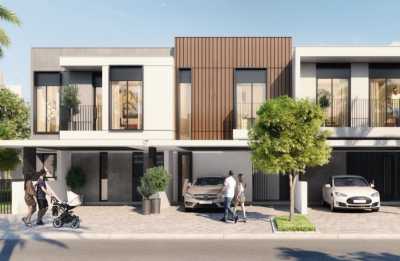
$291,264
Home For Sale
Dubai South, United Arab Emirates

49,000,000 THB
Villa For Sale
Hua Hin, Thailand
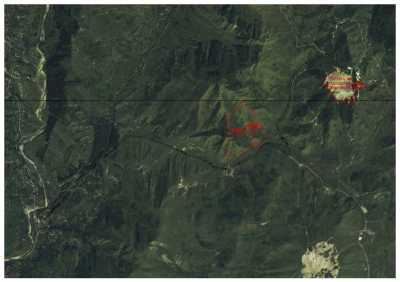
€1,600,000
Residential Land For Sale
Scortoasa, Romania
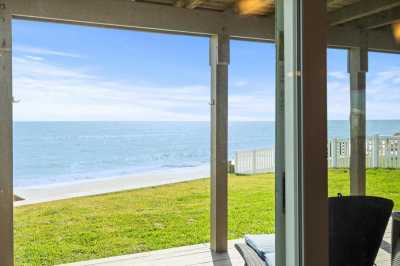
$1,375,000
Home For Sale
Flagler Beach, Florida

$1,475,000
Townhome For Sale
Phoenix, Arizona
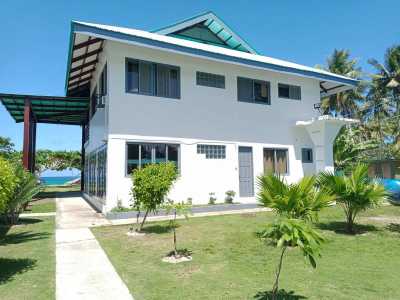
$2,800,000
Commercial New Construction For Sale
General Luna, Philippines

$1,350,000
Mixed Use For Sale
Huaraz, Peru
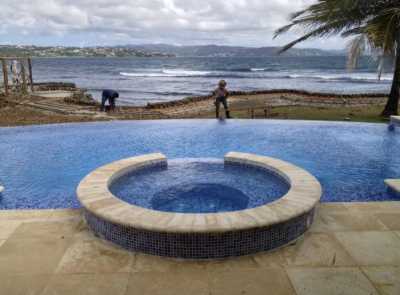
$1,400,000
Vacation Villas For Sale
Lowlands, Trinidad and Tobago
Related News Stories
Residential Real Estate Headlines
- More Americans Opting for Renting Over Homeownership in 2024
- BLOCKTITLE Global Property Tokenization Platform Announced
- Small Investors Quietly Reshaping the U.S. Housing Market in Late 2024
- Greater Miami Overall Residential Sales Dip 9 Percent in November
- U.S. Home Sales Enjoy Largest Annual Increase in 3 Years Post Presidential Election
- U.S. Housing Industry Reacts to the Federal Reserve's Late 2024 Rate Cut
- U.S. Home Builders Express Optimism for 2025
- Older Americans More Likely to Buy Disaster-Prone Homes
- NAR's 10 Top U.S. Housing Markets for 2025 Revealed
- U.S. Mortgage Delinquencies Continue to Rise in September
- U.S. Mortgage Rates Tick Down in Early December
- Post Trump Election, U.S. Homebuyer Sentiment Hits 3-Year High in November
- Global Listings Aims to Become the Future 'Amazon of Real Estate' Shopping Platform
- Greater Las Vegas Home Sales Jump 15 Percent in November
- Ultra Luxury Home Sales Globally Experience Slowdown in Q3
- World Property Exchange Announces Development Plan
- Hong Kong Housing Market to Reach Equilibrium in Late 2025
- Construction Job Openings in U.S. Down 40 Percent Annually in October
- U.S. Mortgage Applications Increase in Late October
- World Property Markets, World Property Media to Commence Industry Joint-Venture Funding Rounds in 2025
- New Home Sales Hit 2 Year Low in America
- U.S. Pending Home Sales Increase for Third Consecutive Month in October
- Pandemic-led Residential Rent Boom is Now Fizzling in the U.S.
- Emerging Global Real Estate Streamer WPC TV Expands Video Programming Lineup
- 1 in 5 Renters in America Entire Paycheck Used to Pay Monthly Rent in 2024
- U.S. Home Sales Jump 3.4 Percent in October
- Home Buyers Negotiation Power Grows Amid Cooling U.S. Market
- Canadian Home Sales Surge in October, Reaching a Two-Year High
- Greater Orlando Area Home Sales Continue to Slide in October
- U.S. Mortgage Credit Availability Increased in October
- U.S. Mortgage Rates Remain Stubbornly High Post Election, Rate Cuts
- Construction Input Prices Continue to Rise in October
- BETTER MLS: A New Agent and Broker Owned National Listings Platform Announced
- Home Prices Rise in 87 Percent of U.S. Metros in Q3
- Caribbean Islands Enjoying a New Era of Luxury Property Developments
- The World's First 'Global Listings Service' Announced
- Agent Commission Rates Continue to Slip Post NAR Settlement
- Market Share of First Time Home Buyers Hit Historic Low in U.S.
- Greater Palm Beach Area Residential Sales Drop 20 Percent Annually in September
- Mortgage Applications in U.S. Dip in Late October
Reader Poll
In 2025, which region of the world are you most likely to buy or invest in real estate?





